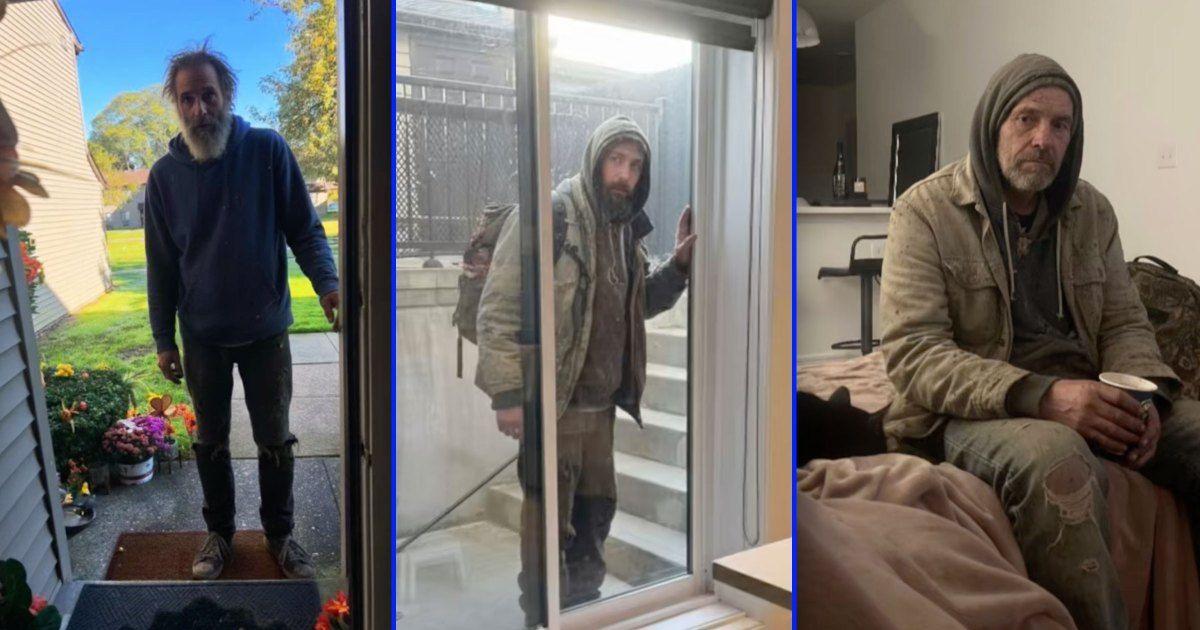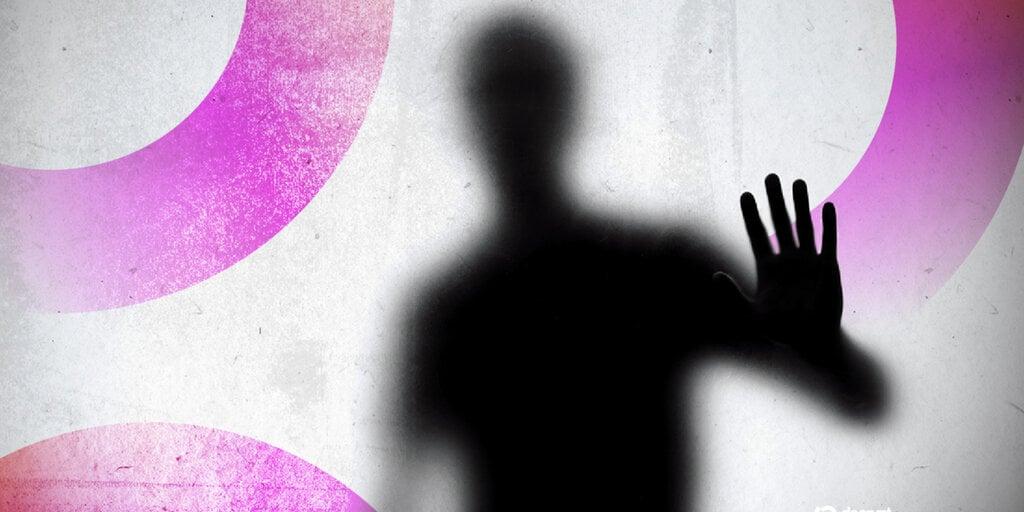AI-Generated 'Homeless Man' Prank Sparks Police Concerns and Highlights AI Misuse
4 Sources
4 Sources
[1]
Woman sent husband AI photos of intruder as a prank. He called 911.
An apartment building in North Bethesda, Maryland, where police say they rushed to what they thought was a real home invasion. (Dan Morse) The initial 911 call was concerning enough: A man was racing home from work, he said, because his wife had just told him a stranger had forced himself into their apartment. A moment later the caller said his wife had just sent him a photo of the intruder on their sofa. Officers from the Montgomery County Police Department in suburban Maryland raced to the scene. The first one arrived at the same time as the panicked husband. They hurried inside. But there was no intruder. Just the wife, police now say, casually sitting on the sofa, next to a cellphone that was mounted on a tripod and facing the door -- all part of a prank that escalated and ended with Moesha Gardener's arrest. Police say she created the photo of the stranger in their apartment using artificial intelligence. The case underscores how police agencies and companies across the nation are trying to anticipate the dangers of AI even as they embrace its potential. Law enforcement has a particular challenge, experts say, because they can have such little time to sort through information during an emergency. "The last thing they need to start doing is not trusting their citizenry," said former police officer Sean Bair, author of the just-published "A.I. in Policing: The Rise of A.I. in the Fight Against Crime." On balance, Bair said, AI will become an immensely positive tool for law enforcement: 911 centers will better prioritize calls; detectives can feed disparate clues to AI to help break a case; commanders will know better how to plan patrolling routes. "There are a lot guardrails that need to be set up, but there isn't one part of policing that won't be touched by AI," Bair said. In the Montgomery County case, officers charged Gardener with reporting a false crime and making false statements to police stemming from the incident earlier this month. "I hope at this point she doesn't think it's funny anymore," one of the responding officers, Sgt. James Mirra, said Tuesday. Gardener declined to comment Wednesday. She is free on bond, according to court records, and is due in court on Nov. 24. She appeared to be following the "AI Homeless Man Prank," in which people insert an AI image of a man within a photo of their home -- creating the idea there is a stranger inside, according to Capt. Amy Daum, commander of the Montgomery Police Department's Bethesda District. The pranksters text the images to friends and family or post them on social media. "She took it farther and framed the prank as a home invasion," Daum said. She said it's not clear if Gardener intended for her husband to call 911 as part of the prank but said if someone is trying to fool a loved one into thinking she is alone with an intruder, "I think you should assume 911 is going to get called." The husband's call to Montgomery's 911 center came just before 10:30 a.m. on Oct. 8, according to court records. He is a member of the U.S. military, Daum said, and was rushing to the apartment still in his fatigues. "He drove home at high speeds," police asserted in court records, "running through intersections in an unmarked civilian vehicle and breaking traffic laws because he thought she was in danger." Eight officers in eight police cars also drove to the scene under "priority" designation, meaning lights, sirens and high speeds where possible, according to Daum and Mirra. "There is inherent risk to that," Daum said. Five of the officers quickly determined there was no threat or emergency at the home. The three others were routed to other calls. Still, officers were tied up on the matter for several hours, Daum said. Inside the apartment, she added, officers tried to explain to Gardener the severity of what she did. They "explained the danger that she put [Montgomery] officers and the whole community in, and confirmed with the husband that nobody found this prank funny or amusing," officers wrote in court papers. "Moesha stated once again, it was just a joke that she didn't expect to get taken so seriously." At the scene, the husband's emotions swung from relief to anger. "He was grateful she was safe but became upset she'd given him the belief she wasn't safe," Mirra said. "He went through an emotional roller coaster." Daum compared the incident to "swatting," when people call 911 about a purported emergency inside homes or schools in the hopes that police will respond rapidly, sometimes even a SWAT team. "We have a challenge with swatting in this county," Daum said. After the incidents, Daum said, officers, detectives and 911 operators have gathered to discuss ways to more quickly ascertain if the call is real. "We've gotten better at recognizing fake calls," Daum said. But for public safety, police need to err on the side of assuming the worst, Daum said. "We're always on guard for complacency, and our officers assume what is related to 911 is true until proven otherwise," she said.
[2]
Police Issue Warning About "AI Homeless Man" Prank
Unsurprisingly, teens have been using the tech to prank their friends and family. The latest hoax involves kids sending their parents AI-manipulated pictures of them welcoming homeless men into their houses -- prompting widespread alarm and even 911 calls, as NBC News reports. The trend shows how widespread highly sophisticated generative AI tools have become, foreshadowing a future in which you can't believe even imagery from friends and family. Case in point, countless videos on social media involve youngsters boasting about how they terrified their parents or friends with the help of AI. "No, I don't know him," one disgruntled father messaged their son in one TikTok video that got millions of views. "What does he want?" "He said you guys went to school together, I invited him in," the son replied, posting an AI-edited image of a man sitting on presumably the family's couch. "JOE PICK UP THE PHONE," the alarmed parent replied. "I DON'T KNOW HIM!!!!!" The prank has gained so much momentum that law enforcement is now issuing warnings, NBC News reports. "Besides being in bad taste, there are many reasons why this prank is, to put it bluntly, stupid and potentially dangerous," the Salem, Massachusetts police department wrote in a statement. "This prank dehumanizes the homeless, causes the distressed recipient to panic and wastes police resources." A press release by the Oak Harbor police department in Washington also warned of "safety concerns" related to an "'AI homeless man' prank." Circulating images made it look like a "homeless individual was present on the Oak Harbor High School Campus." "AI tools can create highly convincing images, and misinformation can spread quickly, causing unnecessary fear or diverting public safety resources," the statement reads. Some are warning that the prank may go far beyond wasting police resources as well. "We want to be clear: this behavior is not a 'prank' -- it is a crime," the Brown County, Ohio sheriff's office wrote in a post on Facebook, following a separate incident. "Both juveniles involved have been criminally charged for their roles in these incidents." It's not just the United States, either. British teens are also using AI tools to prank their parents or friends, according to the BBC, with local law enforcement warning to check if distressing pictures are a prank before calling the cops. "You know, pranks, even though they can be innocent, can have unintended consequences," Round Rock, Texas, police department commander Andy McKinney told NBC. "And oftentimes young people don't think about those unattended consequences and the families they may impact, maybe their neighbors, and so a real-life incident could be happening with one of their neighbors, and they're draining resources, thinking this is going to be fun."
[3]
Relax, That's Not a Stranger in Your House -- It's Just an AI Prank - Decrypt
Critics say the prank dehumanizes unhoused people while exposing risks of AI-generated deception. Police departments from Massachusetts to Texas are warning residents about a viral TikTok prank that uses AI-generated images to make it appear that a homeless man has entered someone's home, prompting panicked calls to 911, "Besides being in bad taste, there are many reasons why this prank is, to put it bluntly, stupid and potentially dangerous," said the Salem, Mass. Police Department, in a statement. That police department issued a public alert and detailed cases in which recipients "sincerely believed that there was an actual intruder" and dialed 911, necessitating immediate response by officers. In Texas, police have also confronted the fallout from the viral prank. The Houston Chronicle reported that officers in Round Rock, a suburb of Austin, responded to multiple 911 calls after residents were shown AI-generated photos depicting a "homeless man" inside their homes. Investigators determined the images were fabricated as part of the TikTok trend. The Round Rock Police Department warned that such hoaxes "tie up emergency resources and create unnecessary fear," according to FOX 7 Austin. Local authorities said they are reviewing whether those who knowingly share the doctored images to provoke panic could face false-reporting charges under Texas law. The trend, known on social media as the "AI homeless man prank," has been documented by tech and local outlets as it spread across TikTok and Snapchat. The Verge first reported that teens are generating realistic images of a stranger in kitchens and hallways and sending them to parents to capture their reactions, with some videos drawing millions of views. Broadcasters and local newsrooms have echoed law-enforcement concerns: ABC's Good Morning America highlighted warnings from departments that the prank wastes emergency resources and can lead to dangerous misunderstandings; stations in Michigan and Minnesota reported similar advisories. TikTok said it had added labels to videos NBC had flagged to clarify that they are AI-generated. The company's transparency filings to California under AB 587 also outline enforcement steps, including content removal and account bans when posts violate those rules. Celebrity attention has amplified the trend's reach. People chronicled examples of viral posts, including a father who called his son 21 times after receiving a doctored image, and noted that GMA co-host Michael Strahan said he briefly "freaked out" when an assistant sent him a manipulated photo.
[4]
What is the 'AI homeless man prank'? Police says it's dangerous
BIG RAPIDS, Mich. (WOOD) - An AI-driven TikTok trend is resulting in 911 calls by panicked people who think a man has broken into their homes. The prank uses artificial intelligence to create a picture or video of a "homeless man" entering a person's home, going through their fridge, or lying in their bed. The prankster sends the fake video to a loved one, who thinks the convincing images are real. Police departments in at least four states have received calls for reported home intrusions only to find out the "intruder" was an AI-generated person, The New York Times reports. The West Bloomfield Police near Detroit, Michigan, said it has received reports of people being fooled by the videos. They warn the "AI homeless man prank" wastes emergency responders' resources. "Here's the problem: officers are responding FAST using lights-and-sirens to what sounds like a call of a real intruder -- and only getting called off once everyone realizes it was a joke," said New York's Yonkers Police Department in a Facebook post. "That's not just a waste of resources... it's a real safety risk for officers who are responding and for the family members who are home if our officers get there before the prank is revealed and rush into the home to apprehend this 'intruder' that doesn't exist." "It's frustratingly easy to do," said Greg Gogolin, a professor and the director of cyber security and data science at Ferris State University. He created a program in a couple hours to show how AI technology can manipulate images. "This is a natural language processing machine learning program called a face swapping," Gogolin said. The program was able to make the images look realistic and take features from a person's face and combines that with other images. Once a technology like this is developed, it often gets used in ways the original creators never intended. "They share that out or sell it. ... It's dispersed and that's where the real danger is because people without any technical background can then utilize that the way they wish," Gogolin said. In some cases, there are things you can look for that could indicate an image is AI. "You might generate something and an arm will be off, the elbows are in the wrong place. It used to be you would often see people with like three arms. A long arm, a long leg, the dynamics were not correct. A lot of that has been corrected or at least drastically improved with the newer versions," Gogolin said. Gogolin said investigators and law enforcement also need more advanced training. "There are very few degreed investigators that have a cyber security background, let alone a computer science background particularly at the local level, even at the state level."
Share
Share
Copy Link
A new TikTok trend using AI to create fake intruder images has led to unnecessary 911 calls and police responses. This prank raises concerns about public safety and the potential misuse of AI technology.
The "AI Homeless Man" Prank: A Dangerous Trend Alarming Police and Parents
In a disturbing new trend, teenagers are using artificial intelligence (AI) to create convincing images of strangers in their homes, pranking their parents and causing unnecessary panic. This "AI Homeless Man" prank has led to numerous 911 calls and police responses across the United States, raising concerns about public safety and the misuse of AI technology
1
2
.How the Prank Works
The prank involves using AI tools to generate realistic images of unknown individuals, often described as "homeless men," inside the prankster's home. These doctored photos are then sent to parents or friends, causing alarm and sometimes prompting calls to emergency services
2
3
.
Source: Futurism
Police Response and Concerns
Law enforcement agencies from Massachusetts to Texas have issued warnings about the prank, highlighting its potential dangers:
-
Wasted Resources: Police departments report responding to multiple false alarms, tying up emergency resources that could be needed for genuine crises
1
4
. -
Safety Risks: Officers responding to these calls often do so with urgency, using lights and sirens, which poses risks to both the responders and the public
4
. -
Potential Legal Consequences: Some police departments are considering pressing charges against pranksters for false reporting
2
.

Source: Decrypt
Real-World Consequences
The prank has led to serious incidents, including:
-
In North Bethesda, Maryland, a woman was arrested after creating an AI-generated image of an intruder in her apartment, causing her husband to call 911 and rush home, breaking traffic laws in the process
1
. -
Multiple police departments have responded to panicked 911 calls, only to discover the reported intruders were AI-generated images
3
4
.
Broader Implications of AI Misuse
This trend highlights larger concerns about the misuse of AI technology:
-
Rapid Spread of Misinformation: AI-generated images can quickly create fear and confusion, as seen in an incident at Oak Harbor High School where fake images of a homeless individual on campus circulated
2
. -
Challenges for Law Enforcement: Police agencies are struggling to adapt to the rapid advancement of AI technology, with many lacking the necessary training to identify and handle AI-generated hoaxes
4
. -
Social Media Amplification: Platforms like TikTok and Snapchat have inadvertently amplified the trend, with some prank videos garnering millions of views
3
.
As AI technology becomes more sophisticated and accessible, law enforcement and tech companies are grappling with how to prevent its misuse while harnessing its potential benefits. This incident serves as a stark reminder of the need for responsible AI use and the importance of digital literacy in an increasingly AI-driven world.🟡 familiarity=🟡The "AI Homeless Man" Prank: A Dangerous Trend Alarming Police and Parents
In a disturbing new trend, teenagers are using artificial intelligence (AI) to create convincing images of strangers in their homes, pranking their parents and causing unnecessary panic. This "AI Homeless Man" prank has led to numerous 911 calls and police responses across the United States, raising concerns about public safety and the misuse of AI technology
1
2
.
Source: Futurism
How the Prank Works
The prank involves using AI tools to generate realistic images of unknown individuals, often described as "homeless men," inside the prankster's home. These doctored photos are then sent to parents or friends, causing alarm and sometimes prompting calls to emergency services
2
3
.Related Stories
Police Response and Concerns
Law enforcement agencies from Massachusetts to Texas have issued warnings about the prank, highlighting its potential dangers:
-
Wasted Resources: Police departments report responding to multiple false alarms, tying up emergency resources that could be needed for genuine crises
1
4
. -
Safety Risks: Officers responding to these calls often do so with urgency, using lights and sirens, which poses risks to both the responders and the public
4
. -
Potential Legal Consequences: Some police departments are considering pressing charges against pranksters for false reporting
2
.

Source: Decrypt
Real-World Consequences
The prank has led to serious incidents, including:
-
In North Bethesda, Maryland, a woman was arrested after creating an AI-generated image of an intruder in her apartment, causing her husband to call 911 and rush home, breaking traffic laws in the process
1
. -
Multiple police departments have responded to panicked 911 calls, only to discover the reported intruders were AI-generated images
3
4
.
Broader Implications of AI Misuse
This trend highlights larger concerns about the misuse of AI technology:
-
Rapid Spread of Misinformation: AI-generated images can quickly create fear and confusion, as seen in an incident at Oak Harbor High School where fake images of a homeless individual on campus circulated
2
. -
Challenges for Law Enforcement: Police agencies are struggling to adapt to the rapid advancement of AI technology, with many lacking the necessary training to identify and handle AI-generated hoaxes
4
. -
Social Media Amplification: Platforms like TikTok and Snapchat have inadvertently amplified the trend, with some prank videos garnering millions of views
3
.
As AI technology becomes more sophisticated and accessible, law enforcement and tech companies are grappling with how to prevent its misuse while harnessing its potential benefits. This incident serves as a stark reminder of the need for responsible AI use and the importance of digital literacy in an increasingly AI-driven world.
References
Summarized by
Navi
[1]
Related Stories
AI-Generated 'Homeless Intruder' Prank Sparks Police Warnings and Ethical Concerns
10 Oct 2025•Technology

AI-Generated Death Threats Become Disturbingly Realistic as Technology Advances
01 Nov 2025•Technology

FBI warns criminals weaponize AI to create convincing virtual kidnapping scams with fake photos
06 Dec 2025•Policy and Regulation

Recent Highlights
1
Google launches Gemini 3 Flash as default AI model, delivering speed with Pro-grade reasoning
Technology

2
OpenAI launches GPT Image 1.5 as AI image generator war with Google intensifies
Technology

3
OpenAI launches ChatGPT app store, opening doors for third-party developers to build AI-powered apps
Technology





